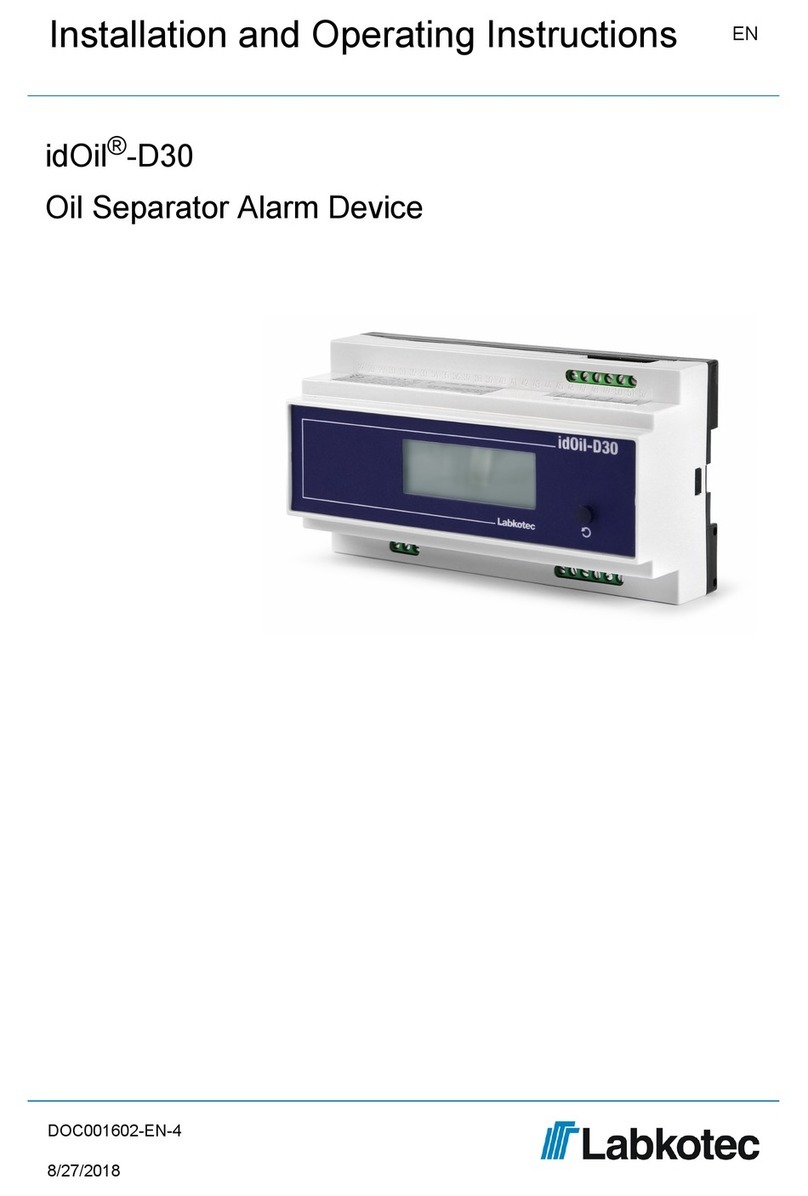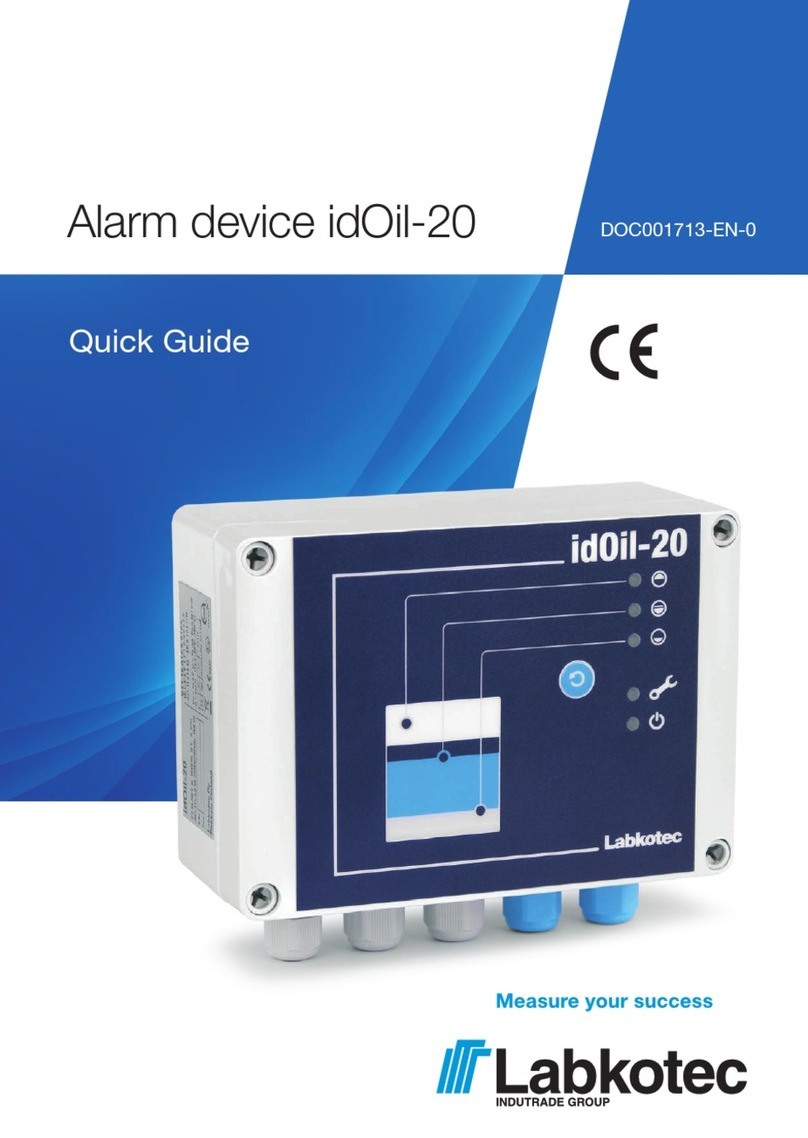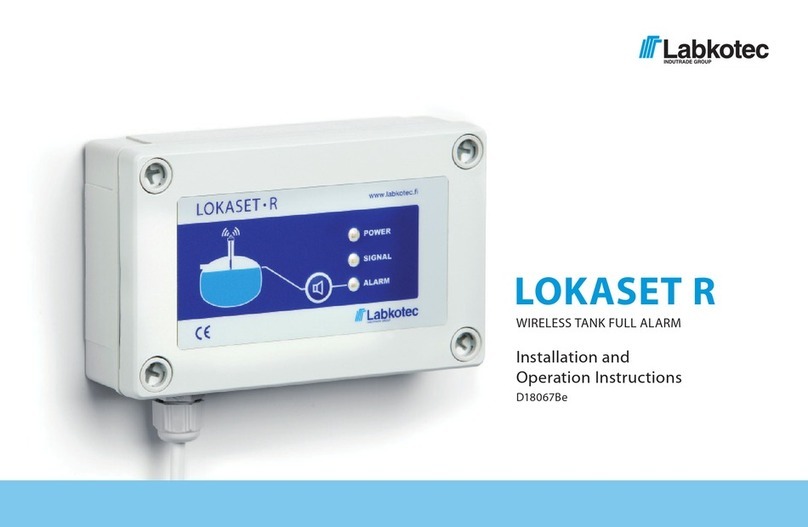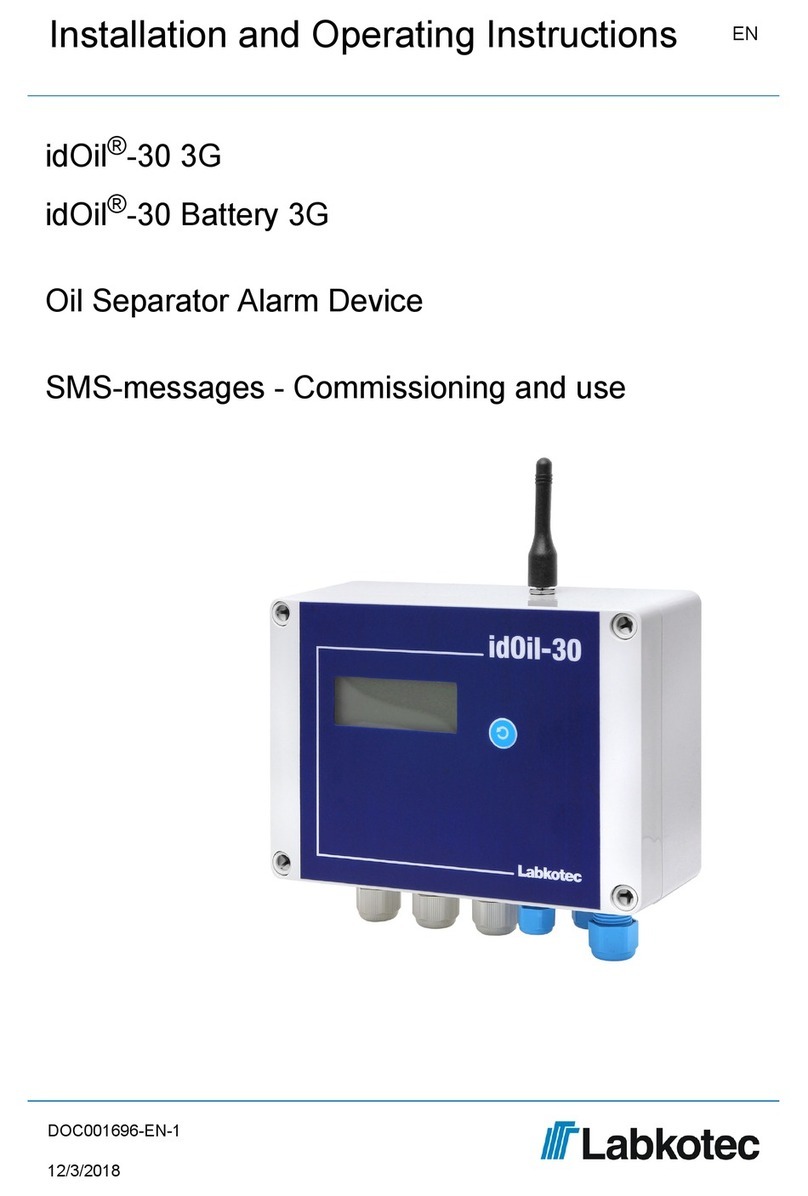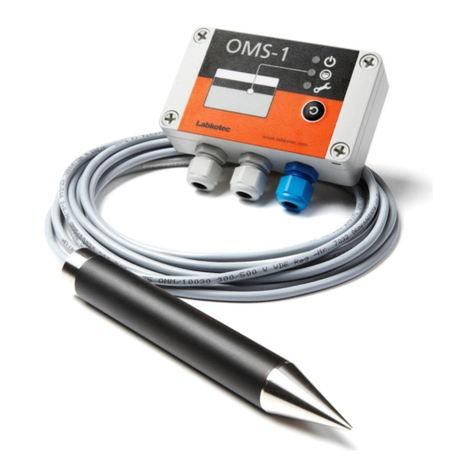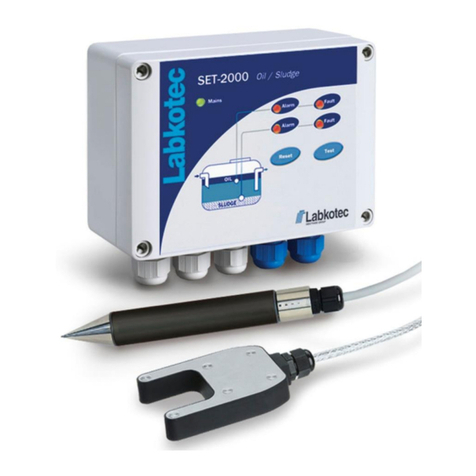2. Safety and the environment
2.1. General safety instructions
The plant owner is responsible for the planning, installation, commissioning, operation,
maintenance and disassembly at the location.
Installation and commissioning of the device may be performed by a trained professional
only.
Protection of operating personnel and the system is not ensured if the product is not used in
accordance with its intended purpose.
Laws and regulations applicable to the usage or the intended purpose must be observed.
The device has been approved for the intended purpose of use only. Neglecting these
instructions will void any warranty and absolve the manufacturer from any liability.
2.2. Intended use
The idOil alarm system is intended for monitoring liquid levels particularly in oil and sand
separators.
The system consists of a control unit and connected sensors that have been installed in the
oil or sand separator. The sensors can be placed in a zone 0 explosive atmosphere, but the
control unit must be positioned in a safe area.
A more specific description of the product’s operation, installation and use is provided later
in this manual.
The device must be used in accordance with the instructions provided in this document.
Other use is counter to the product’s purpose of use. Labkotec cannot be held liable for any
damage caused by using the device in violation of its purpose of use.
2.3. Transport and storage
Check the packaging and its content for any possible damage.
Ensure that you have received all the ordered products and that they are as intended.
Keep the original package. Always store and transport the device in the original packaging.
Store the device in a clean and dry space. Observe the permitted storage temperatures. If
the storage temperatures have not been presented separately, the products must be stored
in conditions that are within the operating temperature range.
2.4. Installation and commissioning
If the temperature in the installation environment is expected to exceed +40°C, the
temperature tolerance of the supply voltage and relay connection cable must be at least
+80°C. Otherwise, any cable that meets the applicable electrical regulations can be used
as the supply voltage and relay connection cable.
The internal temperature of the device can be 10°C higher than the ambient temperature.
This must be taken into account in the cabling of the device.
The idOil control unit must not be installed in potentially explosive areas, but a sensor
connected to it may be installed in potentially explosive atmospheres of zones 0, 1 and 2.
In potentially explosive area installations, the national regulations and appropriate
standards IEC/EN 60079-25 Intrinsically safe electrical systems “i” and/or IEC/EN 60079-
14 Explosive atmospheres - Electrical installations design, selection and erection must all
be followed.

